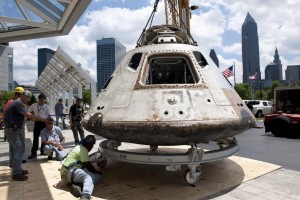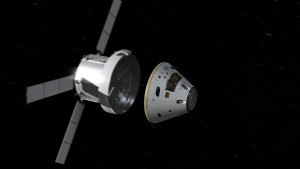At first glance, NASA’s new Orion crew module might look a lot like the Apollo command module. While the two share a similar shape, there are many distinctions between the spacecraft.
Orion’s design builds upon lessons learned by the Apollo and space shuttle programs, but the Orion crew module will be reusable after flights unlike the Apollo command module which required a new spacecraft for each mission.
Orion can support four crew members living and working for 21 days; Apollo lunar missions supported three crew members for 6-12 days. The diameter of the Apollo spacecraft was 12.8 ft, while the Orion crew module has a diameter of 16.5 ft.
While both use batteries, Orion relies on solar panels for power and Apollo relied on fuel cells.
Apollo was designed to go to the Moon and low-Earth orbit, while Orion is designed to travel not only to the Moon, but also to an asteroid and even Mars.
Orion will launch in 2018 on top of NASA’s new rocket, Space Launch Systems (SLS), for their first integrated unmanned flight. On its second flight with SLS, Orion will carry a crew for the first time and enable human exploration deeper into space than we’ve ever gone before.



